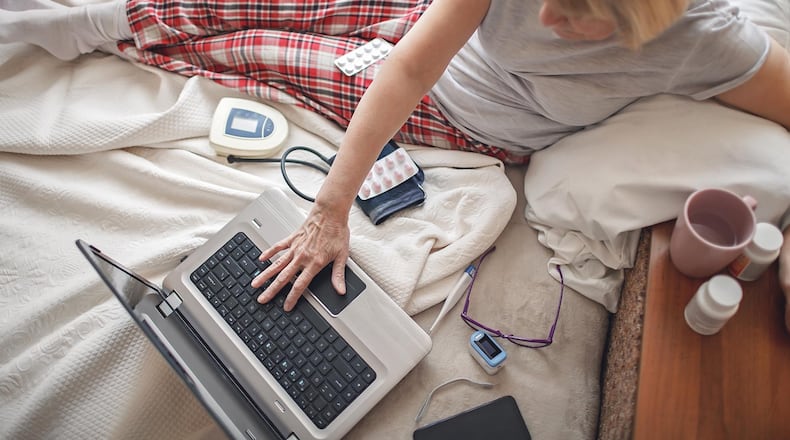When the pandemic forced medical providers to find creative ways to see patients, telehealth provided an answer.
But as the pandemic has receded, telehealth services — which include video chats as well as phone calls — are solving long-standing problems with access to healthcare. It allows patients to see a doctor from wherever they are, increasing access in spite of life’s circumstances.
Dr. Justin Zaghi, chief medical officer at Heal, a company that self-advertises “primary care in the comfort of your home, covered by Medicare” has witnessed telehealth both before and during the pandemic. “Prior to the pandemic, telemedicine was really a miniscule part of the care delivery model,” said Zaghi, whose company expanded operations to Georgia in 2019. “What the pandemic did is that it accelerated the adoption of telemedicine across our practice.”
According to a briefing on national telehealth use in 2021 released in February by HHS, one in four of nearly 700,000 respondents said they had used telehealth services in the previous four weeks. Telehealth use was highest among those under Medicaid and Medicare, Black respondents, and those earning less than $25,000.
Another research report from HHS found that in 2020, Medicare telehealth visits increased to nearly 52.7 million from 840,000 in 2019.
For Walkitria Smith MD, chief digital medical officer at Morehouse School of Medicine, telehealth services have begun the process of evening health outcomes between various populations. Morehouse School of Medicine launched their telemedicine program in 2018 with a focus on reaching rural communities by using remote patient monitoring.
Smith said telehealth can help erase barriers to health care such as transportation, poverty and education, what are known as “social determinants of healthcare.”
“We still have a long way to go as it relates to people of color and those who are most impacted by social determinants, but it did begin to address one of the huge social determinants of health care and equity,” Smith said.
Another way telehealth has expanded is through the introduction of virtual second opinions by top medical institutions such as The Cleveland Clinic, MD Anderson, and The Mayo Clinic, amongst others.
Credit: Daniel Walden
Credit: Daniel Walden
In the spring of 2021, Dan Walden noticed his heart beating at a strange rhythm. Walden, 61, of Covington would soon discover that he had light-chain amyloidosis, a rare bone marrow disease that occurs in 1 in 10 million people. Without treatment, patients live 9 to 12 months.
His local doctor performed tests on him, but was unable to confirm his condition to start treatment. So, Walden received a virtual second opinion from The Clinic by Cleveland Clinic and was able to start chemotherapy after the virtual visit.
“I had my doubts about virtual medicine, but, in this case, they were able to examine the work that had already been done by practitioners that had their hands on me,” he said. “They stitched together all of the important information into a diagnosis.”
Along with the benefits of telehealth, there are concerns of increased healthcare fraud.
“During the pandemic, we saw more COVID-related fraud schemes to include the use of fake testing sites, using telemarketing calls, social media, etc. to offer COVID-19 services in exchange for personal information,” said Tamala Miles, special agent in charge of HHS’ Atlanta regional Office of Investigation within the Office of Inspector General.
In July, the Department of Justice charged 36 defendants around the country with committing a variety of alleged healthcare fraud schemes, including $1 billion in telemedicine schemes. Some of the defendants charged allegedly controlled a telemarketing network, based both domestically and overseas, that lured thousands of elderly or disabled patients into a criminal scheme.
“During COVID, our oversight has never been more important. We have not missed a beat in addressing the ongoing public health emergency. We cannot and will not stop what we’re doing,” she said. “While the expansion of telehealth has been critical to maintaining patients access to care, it’s important that new policies and technologies with the potential to improve care and enhance access achieve these goals, and are not compromised by fraud, abuse and misuse.”
The Atlanta Journal-Constitution and Report for America are partnering to add more journalists to cover topics important to our community. Please help us fund this important work at ajc.com/give
About the Author
The Latest
Featured



